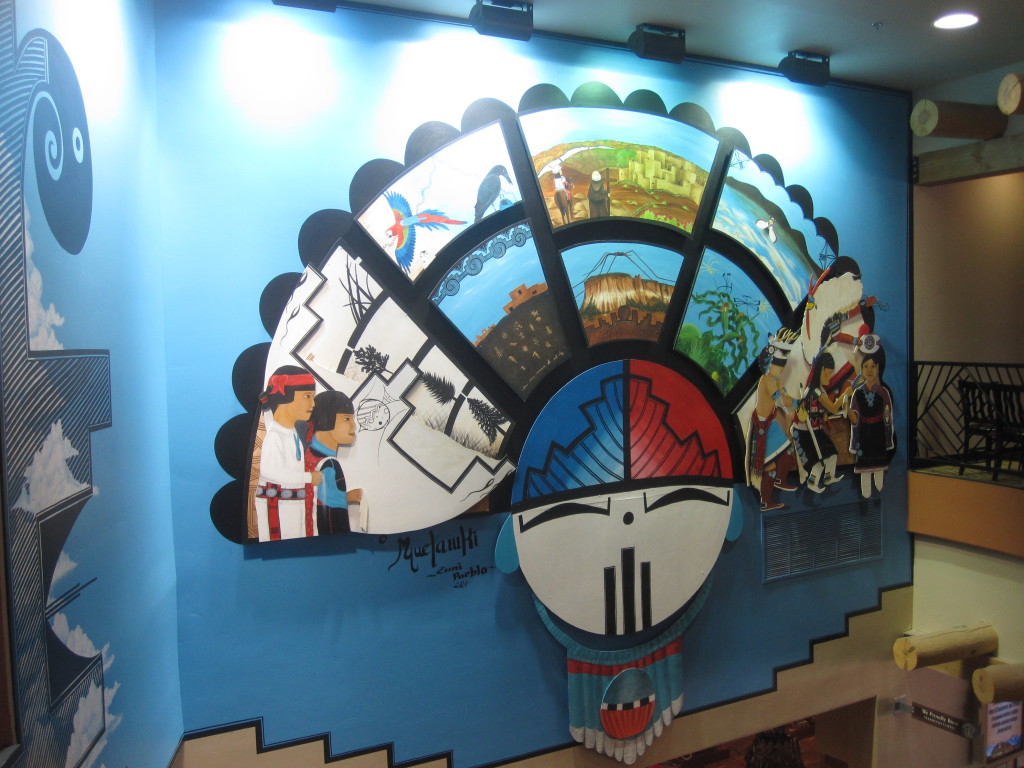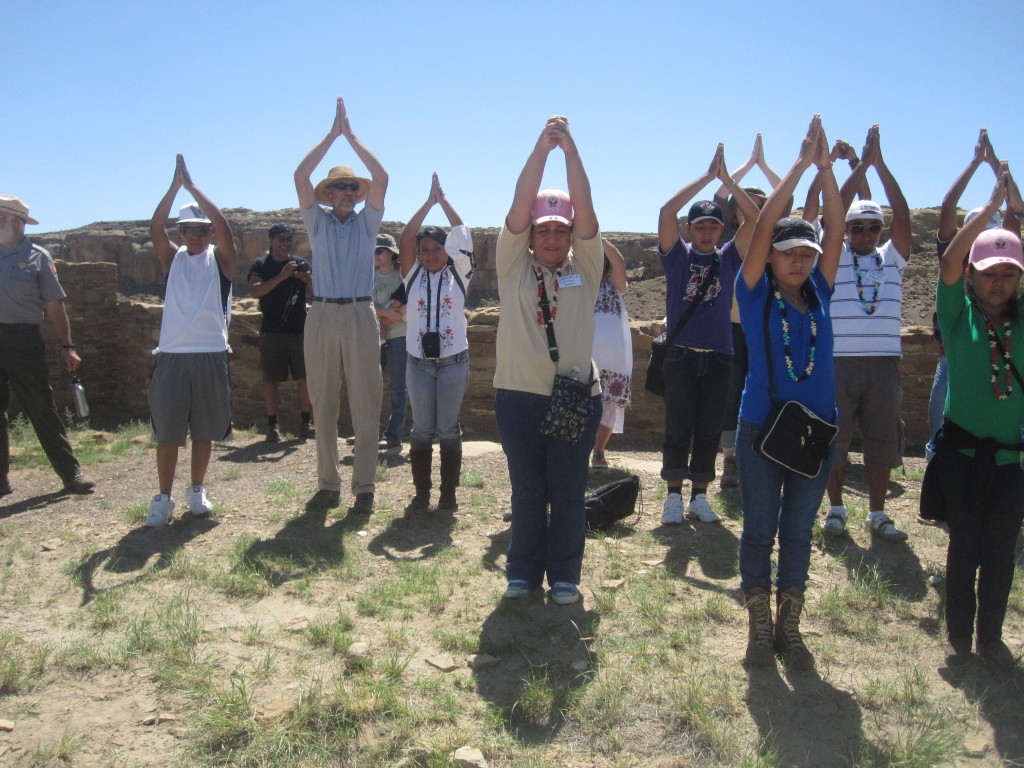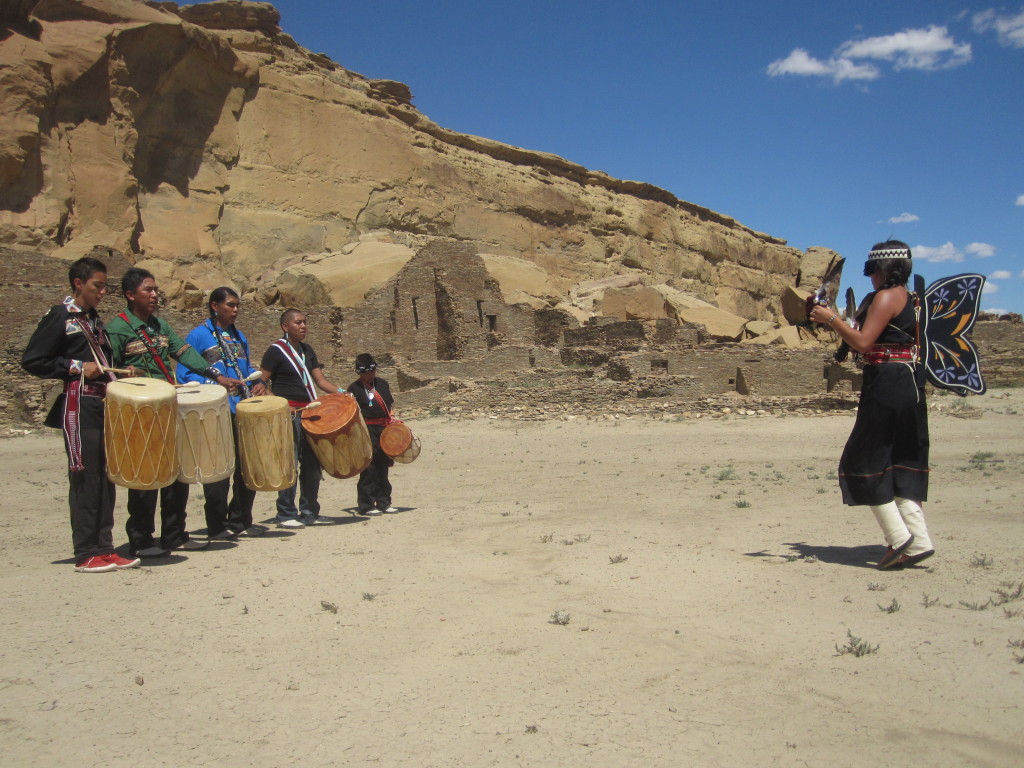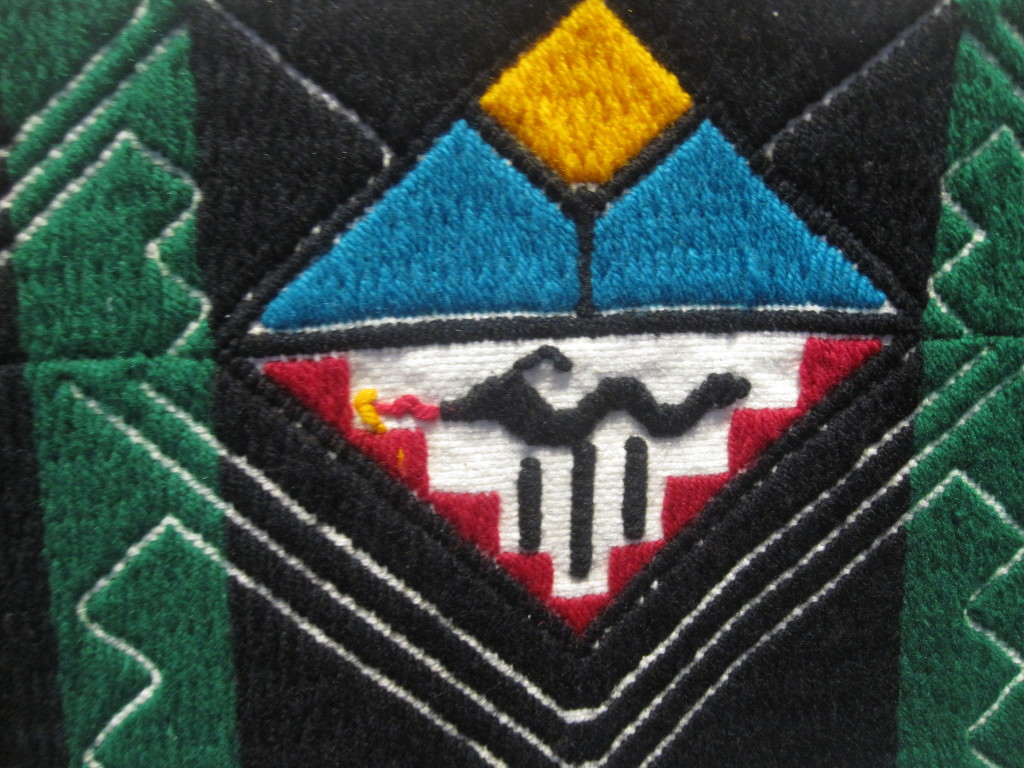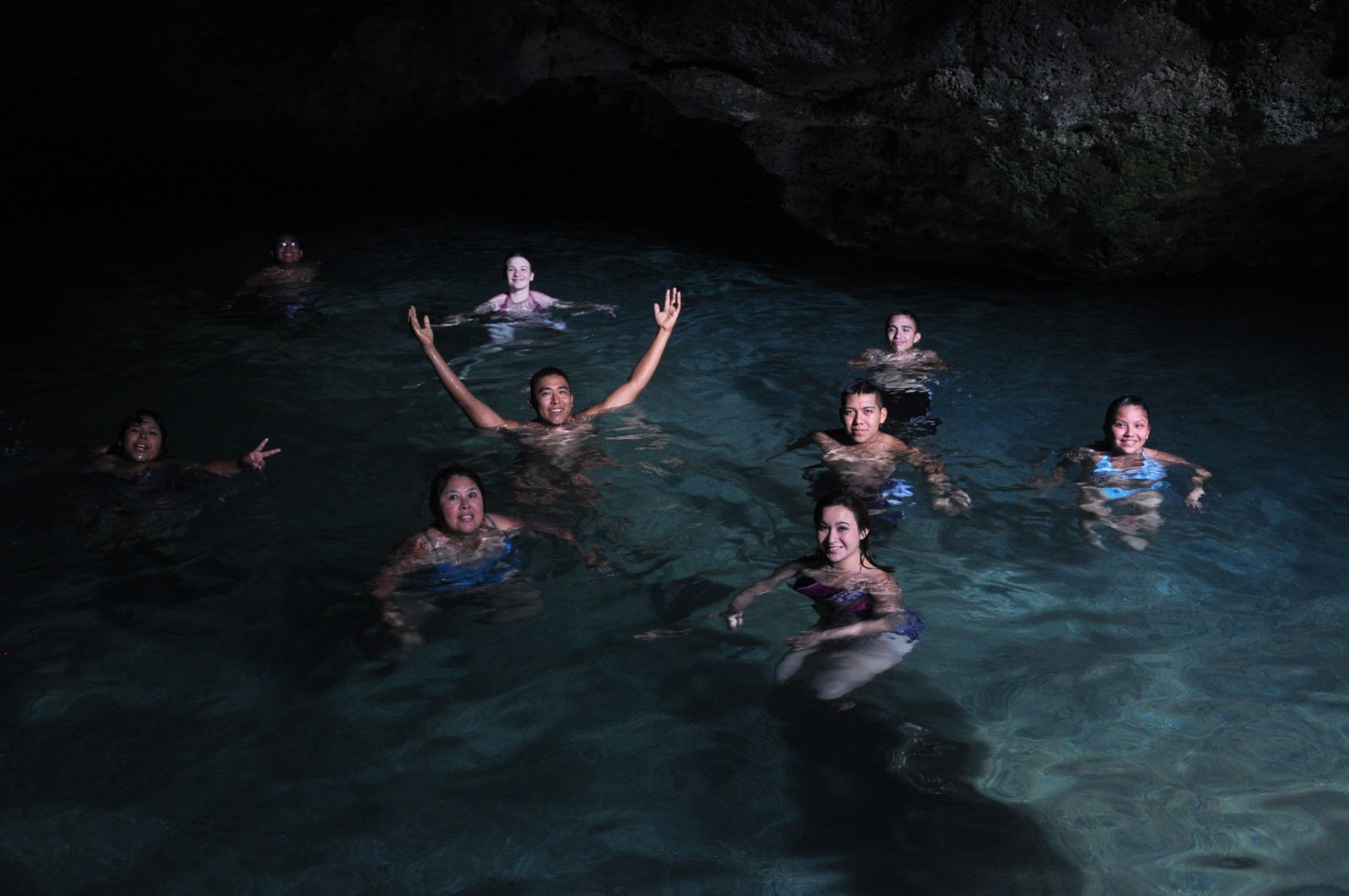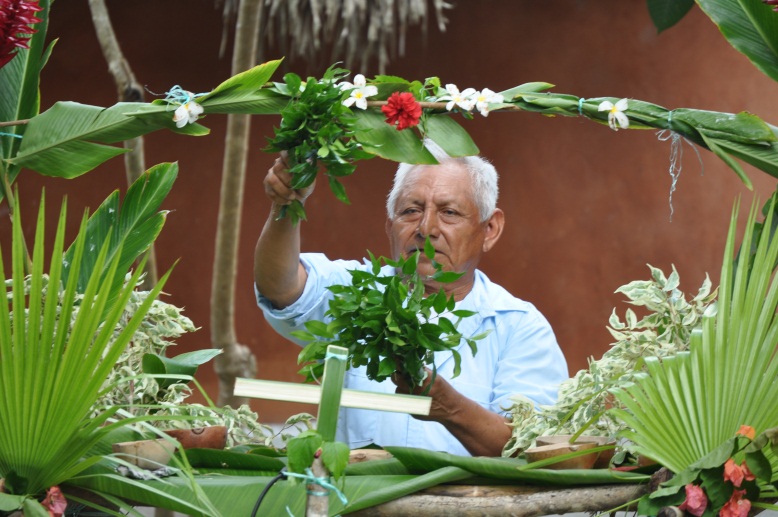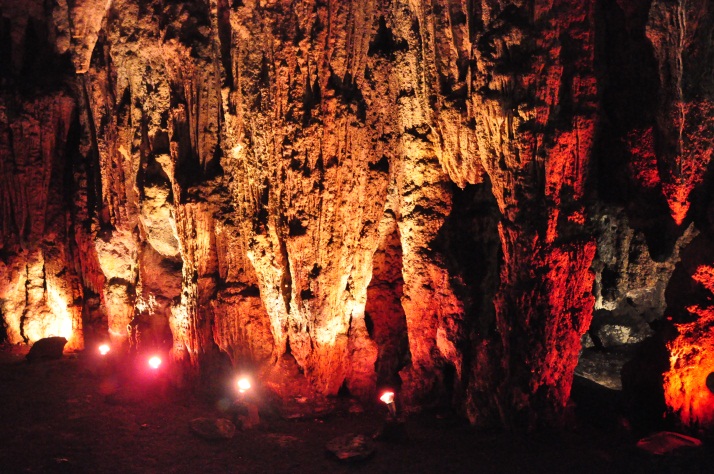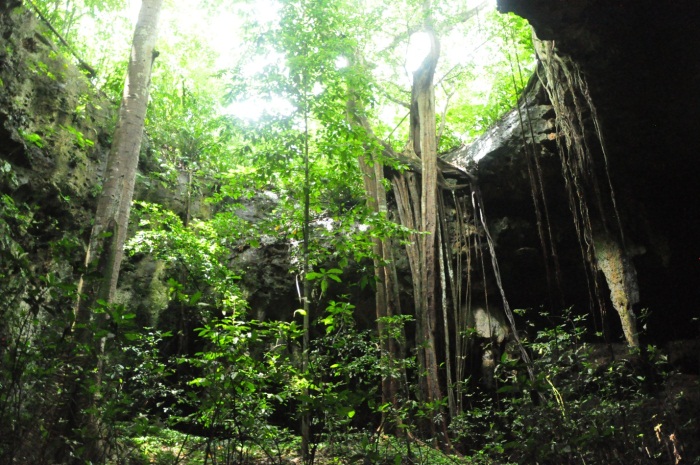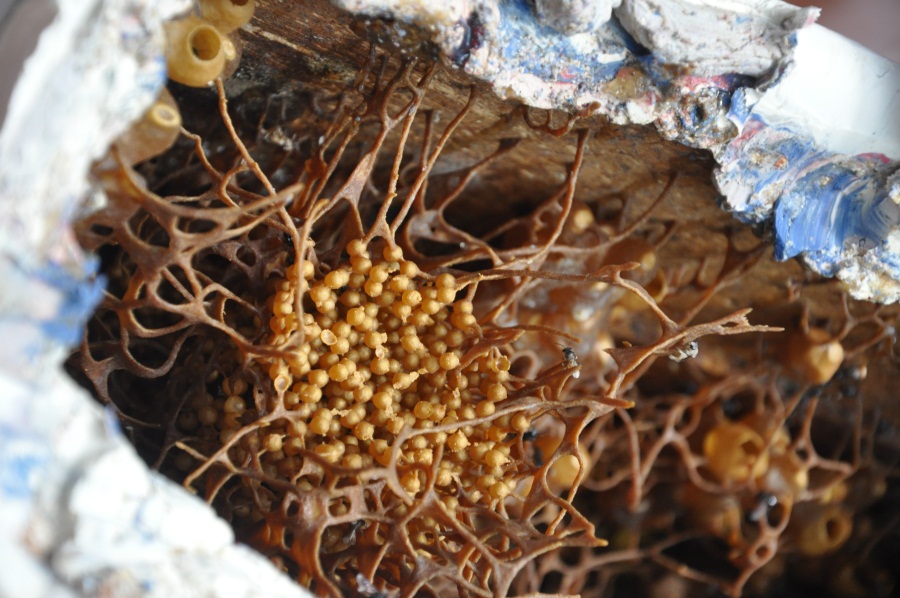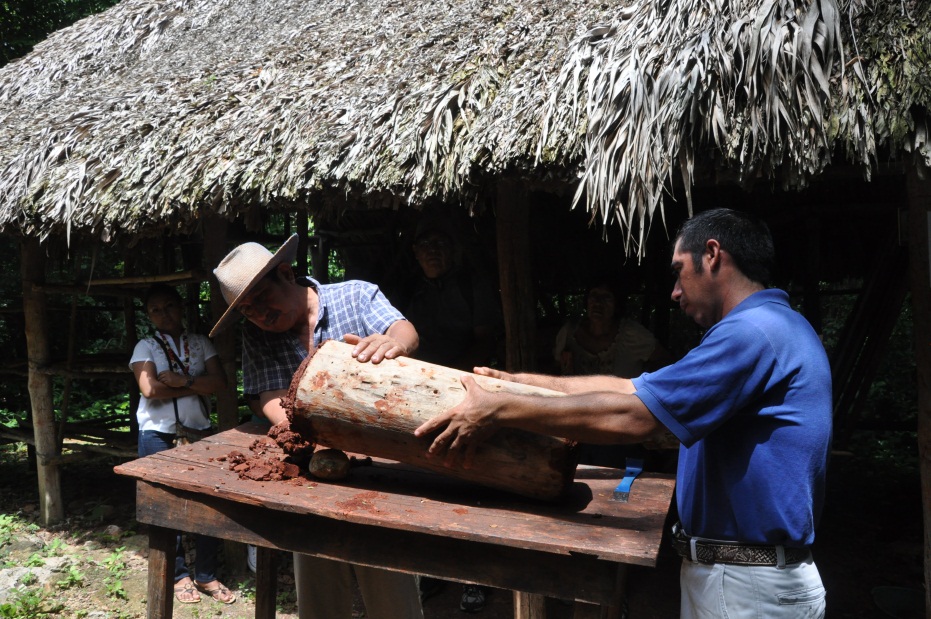INDIGENOUS STUDENTS PARTICIPATE IN THE
2nd PUEBLO & MAYA YUCATAN CULTURAL EXCHANGE
Photo Credits: Mary Ellen Hawkins
Yucatán, México –A group of youth with diverse backgrounds from Laguna Pueblo, California, and several Maya communities in the Yucatán came together in southern México for the 2nd annual field study and cultural exchange. The goal of the cultural exchange is to develop leadership in youth by strengthening cultural identity through interactions with other cultures that share similar values and traditions. This trip offered the youth opportunities to deepen their knowledge gained during the 1st phase of the program, held in New México in 2011 at Chaco Culture National Historical Park and Pueblo of Laguna and Acoma communities.
The organizers believe that participating can be motivated to preserve the richness of their culture by learning about the legacy of their ancestors in a cultural context. These experiences have ignited in the youth a spirit of service towards their communities.
Eight youth from Pueblo of Laguna, three youth from California, and five Maya youth from communities in the Yucatán, México, were chosen to participate.
The participating youth were knowledgeable about their cultural traditions, including their native languages and indigenous and cultural knowledge of their people expressed through art, various forms of social dances and song, astronomy, traditional medicine, and architecture. Every youth played an important role during the exchange, including translation, photo taking and documentation, and assisting organizers in a variety of ways. The youth were accompanied by eight chaperones.
Visits to Maya rural towns near Maní, Yucatán, engaged youth in community-based environments that fostered and deepened their knowledge and fostered connections between contemporary subjects like geometry, astronomy, and medicine, with ancient traditions that integrate these knowledge systems into a holistic practice. The week was filled with rich learning opportunities through a variety of activities in the towns of Maní, Santa Elena, Pebá, Muna, Telchac, and Mérida. The group also visited the Maya archaeological sites of Loltún, Kabah, and Uxmal.
The cultural exchange participants were hosted jointly by the Ecological Agricultural School U Yits Ka’an in Mani and the archaeological site of Uxmal. These partners were able to provide learning experiences that integrated the legacy of the ancient Maya with the living traditions of the Maya people today, who have lived in the Yucatán peninsula continuously for more than 2000 years.
At the home of Maya elder Don Hernán Perera or Santa Elena, the youth were able to learn about how Maya communities today honor and cultivate corn in the traditional way. Students worked alongside Don Hernán as he conducted a Sac Ha’ offering (corn ceremony) in his milpa or corn field. Don Hernán shared his knowledge of construction techniques of the vernacular Maya dwelling, did a demonstration of rope making with henequen, and shared his knowledge of medicinal and other native plants in his garden. The group was treated to a traditional meal prepared by Don Hernán’s family.
Bathing at the local cenotes (sinkholes) in the towns of Tekit and Pebá offered the group some respite from the heat and humidity, as well as the unique opportunity to learn about local uses of cenotes as ancestral water sources and their astronomical significance as observation chambers for solar alignments at important times of the year that helped the Maya ancestors time their crops and design their calendar system.
Another wonderful environment filled with rich learning included a visit with a local artist Patricia Martín Morales in the town of Muna, where the youth learned about traditional Maya pottery that her family has been replicating from ancestral designs for more than 15 years. Patricia demonstrated her skills in making and painting pottery including traditional Maya techniques for processing clays and gathering natural pigments. Pueblo participants were astounded at the similarities between the Maya techniques and the way in which the Pueblo people have been making pottery in their homelands for countless generations.
An important component of the trip was to expose the youth to the Maya archaeological sites of Loltún, Kabah, and Uxmal. These visits to ancestral sites that are still held sacred by the Maya people provided enriched learning opportunities around architecture and astronomy. This allowed participating youth, especially those of Pueblo heritage, to identify common ground and connections with their people’s ancestral sites, like Chaco Canyon and contemporary Pueblo villages within and around New Mexico. As the youth learned a greater understanding of these special places, the connections unfolded and deepened. One of the special moments was a visit the Loltún archaeological site, which is a system of underground caves that harbors evidence for the longest human presence in this area, spanning from 9000 BCE to 1250 CE. Loltún means “Stone Flower” in Yucatec Mayan, and the caves have important significance to the Maya, who believe they are portals to the realm of their ancestors.
The tours of Kabah and Uxmal provided the participants a chance to interact with local Maya archaeologists and restoration teams who are uncovering important information regarding the ancestral way in which the Maya engineered several water collection systems more than 1000 years ago in this area with no rivers and very few natural sources of water. This provided the participants an opportunity to reflect on the importance of water to all of us and the traditions shared by these cultures surrounding water and rain.
Another special moment was a chance to work with native, non-stinging Maya bees called Xunan Kab at the Ecological School U Yits Ka’an. The youth learned how the local community cares for the bees and how important they are to community sustainability. They learned how fragile these native bees are and what great care the community puts into watching over them. They learned how Maya community members use this special honey and process it into medicinal and edible products.
The cultural exchange culminated with a Fiesta assisted by more than 150 people from surrounding Maya communities that are affiliated with the Ecological school. The day featured traditional music, dance, foods and exchanges among all participants. The Pueblo youth shared social dances of buffalo, butterfly and eagle. The Maya youth and community shared traditional dances of Jarana and Cabeza de Cochino and played music with traditional instruments of ancestral designs. It was a treat for everyone to listen to and watch musicians play the traditional musical instruments of the Maya people. The music added to a wonderful spirit of celebration! The day ended with a traditional Maya meal prepared by local community members that featured Maya foods and dishes made with locally grown agricultural products. The event ended with a blessing for rain and a recognition ceremony for the participating Maya community, sponsors, and cultural exchange youth.
The 2nd cultural exchange provided participants with many blessings as well as the challenges of navigating a new environment and a different culture. Among the highlights was the chance to reconnect the youth who had shared powerful experiences at Chaco Canyon the year before, and to continue to deepen their relationship kindled in the 1st phase of the project. The youth instantly continued their conversations from the New Mexico visit, and shared updates and new adventures in their lives. Despite significant language barriers, Spanish/Maya speakers, English/Keres speakers, and a few English/Spanish speakers, the youth continued to strengthen their bonds of friendship and learn from one another.
The collaborators would like to extend their gratitude to all the funders and partners who made this cultural exchange possible, and send blessings for the work they do!

